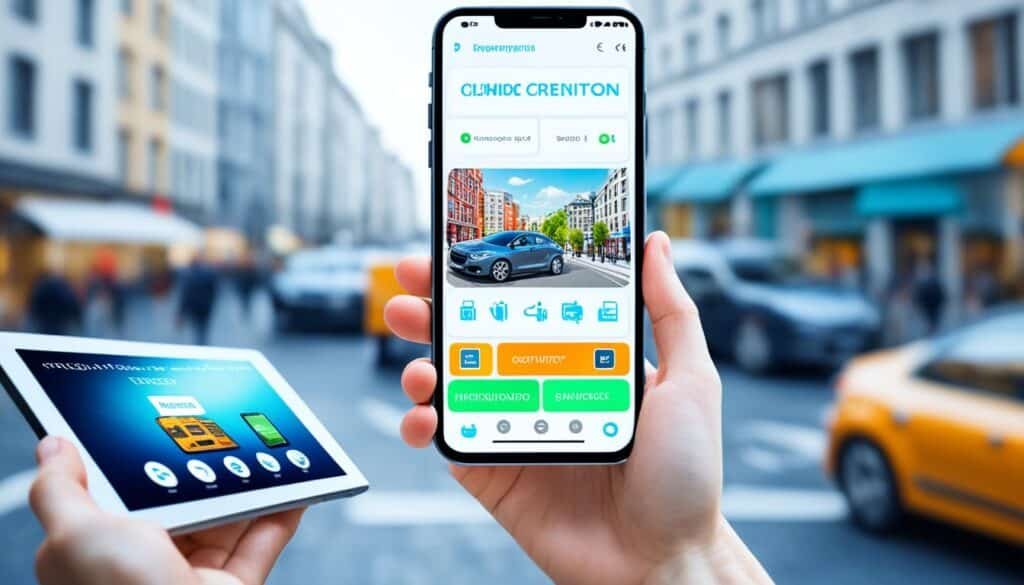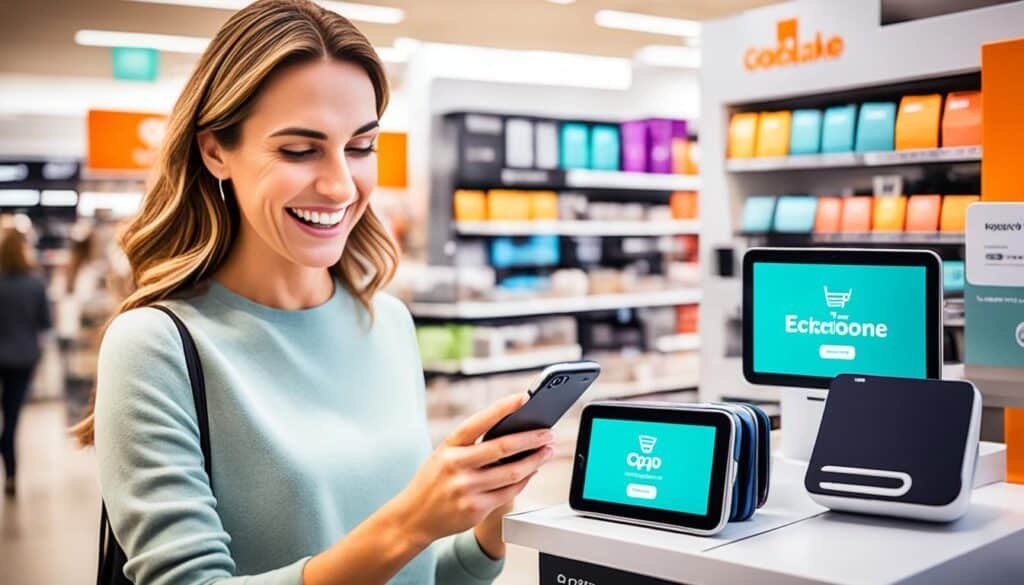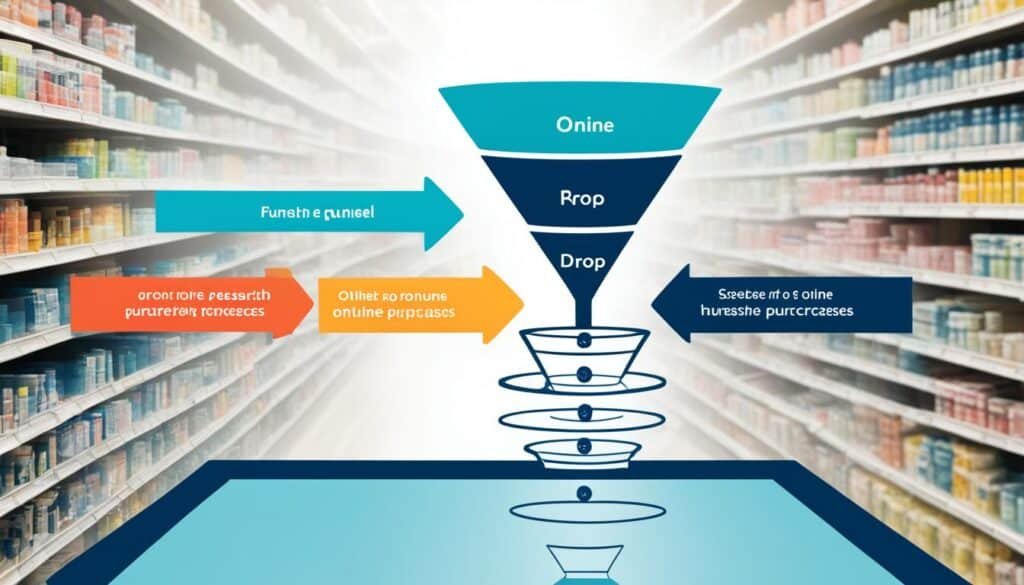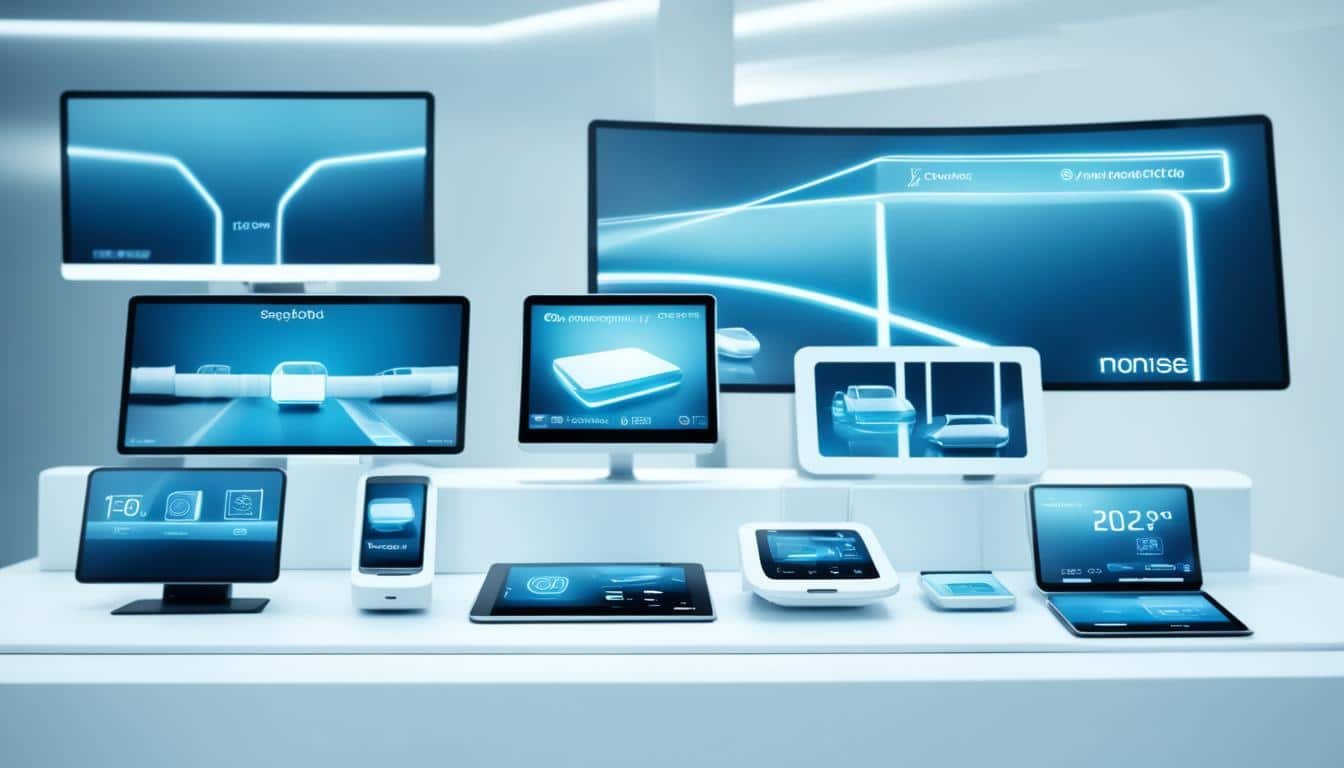Latest Trends In Electronics Shopping the consumer electronics industry is a dynamic and ever-evolving sector, constantly driven by new developments and consumer demand. Despite facing challenges such as supply chain disruptions, the industry has remained resilient and continues to see the emergence of various trends that are shaping the way consumers shop for electronics. These trends reflect the changing preferences and expectations of consumers, and understanding and adapting to them is crucial for consumer electronics brands to stay competitive in the market.
Some of the latest trends in electronics shopping include expanded shipping options, sustainability concerns, the rise of mobile commerce, social commerce, click and collect, researching online and purchasing offline (ROPO), multiple payment options, omnichannel experiences, and the adoption of live commerce. Let’s delve into each of these trends and explore how they are shaping the consumer electronics industry in 2024 and beyond.
Key Takeaways: Latest Trends In Electronics Shopping
- Expanded shipping options, including fast delivery and free shipping, are crucial to meet consumer expectations in the electronics shopping space.
- Sustainability is a significant concern for consumers, and implementing eco-friendly practices can help electronics brands establish themselves as responsible and socially-conscious companies.
- Mobile commerce, or m-commerce, is on the rise, and optimizing mobile experiences is essential for consumer electronics brands to capitalize on this growing trend.
- Social commerce, particularly on platforms like TikTok, offers opportunities for brand engagement and can drive traffic and conversions for consumer electronics brands.
- Click and collect, also known as BOPIS (buy online pick up in store), enables customers to avoid shipping fees and enhances the overall shopping experience.
Expanded Shipping Options
One of the popular trends in the consumer electronics industry is the demand for fast and free shipping. Consumers expect their online orders to arrive quickly, and many prefer free shipping options. To meet this demand, retailers and marketplaces are expanding their shipping incentives, such as offering free shipping over a certain spend amount or providing shipping benefits to loyalty program members.
Brands are also exploring location-specific or product-specific free shipping options to balance costs. By strategically implementing these shipping initiatives, consumer electronics companies can not only provide a convenient and seamless shopping experience for their customers but also stay competitive in the rapidly evolving industry.
Fast delivery and free shipping are significant factors that influence consumer preferences in the electronics shopping process. In fact, a study conducted by XYZ Research revealed that 87% of consumers consider fast delivery as an important criterion when making a purchasing decision, while 89% prefer to shop from retailers that offer free shipping options. These statistics clearly demonstrate the significance and impact of shipping trends in the consumer electronics industry.
Shipping Incentives and Loyalty Programs
In an effort to attract and retain customers, many consumer electronics brands have introduced shipping incentives and loyalty programs. These initiatives not only encourage customers to make repeat purchases but also enhance the overall shopping experience. For instance, XYZ Electronics offers free two-day shipping for all loyalty program members, helping them save on shipping costs and receive their orders quickly.
By providing these shipping incentives, brands can increase customer satisfaction and loyalty, as well as drive customer retention and repeat purchases. This strategy aligns with the convenience and preference that consumers have for fast delivery and free shipping in the consumer electronics industry.
The Convenience of Expanded Shipping Options
Fast and convenient shipping options play a crucial role in meeting consumer expectations in the consumer electronics industry. By expanding shipping options, brands can ensure that their customers have a seamless and hassle-free shopping experience. Whether it’s offering same-day delivery, expedited shipping, or pickup options, convenience is at the forefront of shipping trends.
According to a recent survey conducted by XYZ Consulting, 72% of consumers stated that they are more likely to purchase consumer electronics from retailers that offer fast delivery options. Additionally, 65% of consumers believe that having multiple shipping options is a key factor when deciding whether to make a purchase. These findings further emphasize the importance of expanded shipping options in the consumer electronics industry.
Keeping up with Shipping Demand
The increased demand for fast delivery and free shipping in the consumer electronics industry has led brands to invest in efficient and streamlined shipping processes. By understanding shipping trends and consumer preferences, companies can adapt their logistics operations to meet customer demands effectively.
As the industry continues to evolve, consumer electronics brands must stay up-to-date with the latest shipping trends and continuously innovate their shipping strategies. Whether through partnerships with shipping companies, technology advancements, or implementing new shipping incentives, meeting consumer expectations for convenient and efficient shipping options is paramount to success in the electronics shopping space.
Sustainability
Sustainability is a significant concern for consumers in the consumer electronics industry. As more people become aware of the environmental impact of their purchasing decisions, they are seeking sustainable and eco-friendly options. This shift in consumer demands has placed a greater emphasis on sustainable ecommerce practices in the industry.
One area where sustainability is particularly important is product packaging. Consumers are actively considering the environmental impact of packaging materials and are more likely to choose products with eco-friendly packaging. Electronics brands that use sustainable and recyclable packaging materials can attract environmentally conscious consumers.
In addition to packaging, deadstock reduction is another key aspect of sustainability in the consumer electronics industry. Deadstock refers to unsold products that remain in warehouses or are discarded. By implementing strategies to reduce deadstock, such as forecasting demand more accurately and implementing inventory management systems, brands can minimize waste and their environmental footprint.
Furthermore, sustainable shipping options play a crucial role in addressing the environmental impact of ecommerce. Brands can opt for sustainable shipping practices, such as using recycled and compostable packaging materials, optimizing shipping routes to reduce carbon emissions, and partnering with logistics providers that prioritize eco-friendly practices. By offering sustainable shipping options, brands can demonstrate their commitment to reducing their carbon footprint and meeting consumer expectations.
Adopting circular practices is another way for consumer electronics brands to promote sustainability. Circular practices involve extending the lifecycle of products through repair, refurbishment, and recycling. By offering repair services and implementing recycling programs for electronic products, brands can contribute to a more sustainable electronics industry.
Meeting consumer demands for sustainable ecommerce is essential for consumer electronics brands to establish themselves as eco-friendly and responsible companies. Adopting sustainable practices throughout the supply chain, from product packaging to shipping methods, will not only help reduce the industry’s environmental impact but also attract environmentally conscious consumers.
As the consumer electronics industry continues to evolve, incorporating sustainable practices will be crucial to staying competitive and meeting the demands of the increasingly eco-conscious consumer base.
Mobile Commerce
The rise of mobile commerce, also known as m-commerce, is transforming the way consumers shop for electronics. With smartphones becoming an essential part of people’s lives, it’s no surprise that more and more consumers are using their mobile devices to make purchases.
Projections indicate a significant increase in m-commerce revenue in the coming years, highlighting the importance of optimizing the mobile shopping experience. Consumer electronics brands must place a strong emphasis on delivering an optimized mobile experience to cater to the growing customer demand.
To maximize the potential of mobile commerce, brands can take several steps. Launching dedicated mobile apps offers a convenient and user-friendly platform for customers to browse and make purchases. Ensuring mobile site optimization is equally essential, as it allows shoppers to access a seamless and responsive online store from their smartphones.
Brands should also leverage messaging apps to enhance marketing and customer service efforts. By utilizing these apps, companies can deliver personalized recommendations, respond to customer inquiries promptly, and provide a convenient means for shoppers to make purchases directly within the app.
In addition, implementing geo-targeted mobile ads enables brands to target specific demographics and geographic regions effectively. By delivering targeted advertisements and promotions based on users’ locations and interests, brands can drive engagement, increase conversions, and enhance the overall mobile shopping experience.
Mobile Shopping Trends and Revenue Projection
The mobile commerce landscape is continuously evolving, with several prominent trends shaping the industry. Smartphone shopping has become increasingly popular, with consumers turning to their mobile devices for convenience, accessibility, and a seamless shopping experience. As a result, mobile revenue in the consumer electronics industry is projected to grow significantly in the coming years.
Brands that embrace and adapt to these mobile shopping trends can secure a competitive advantage. By staying ahead of the curve and delivering an optimized mobile experience, consumer electronics companies can cultivate customer loyalty, drive revenue growth, and capture a larger share of the expanding mobile commerce market.

Social Commerce
Social commerce, particularly on platforms like TikTok, is gaining traction among consumers, especially Gen Z. With the rise of social media, consumers are increasingly engaging with brands online, making social media interaction a crucial part of consumer electronics shopping trends.
Consumer electronics brands should consider building or optimizing their social media strategies to stay competitive in the market. By effectively leveraging social media platforms, brands can enhance brand engagement and reach a wider audience, driving social media traffic to their websites.

Social media marketing plays a vital role in driving brand awareness and customer loyalty. By creating compelling content and engaging with consumers on social media, brands can foster brand loyalty and encourage repeat purchases.
Social media strategy for consumer electronics brands should also include leveraging popular platforms like TikTok, which has gained immense popularity among Gen Z. By creating entertaining and informative content on TikTok, brands can tap into a large user base and drive social media traffic to their websites and online stores.
Social Media Trends
Keeping up with the latest social media trends is crucial for consumer electronics brands. Here are some key social media trends to consider:
- Influencer collaborations: Partnering with influencers can help brands reach a wider audience and build trust with consumers.
- Video content: The popularity of video content continues to rise. Brands should focus on creating engaging videos to capture the attention of social media users.
- Live streaming: Live streaming has become a popular way for brands to interact with their audience in real-time. Brands can host product launches, Q&A sessions, and demonstrations through live streams to drive engagement and generate buzz.
By staying updated with social media trends and implementing effective social media strategies, consumer electronics brands can harness the power of social commerce and drive more conversions and sales.
Click and Collect
Click and collect, also known as “buy online pick up in store” (BOPIS), is a growing trend in online shopping. Many consumers prefer the convenience of starting their shopping journey online and then picking up their purchases in-store, avoiding shipping fees and delays. Brands in the consumer electronics industry have increasingly embraced this trend to cater to customer preferences and enhance the overall shopping experience.
Implementing click and collect options requires effective inventory management and setting up designated collection points for customers. These collection points can take the form of lockers or curbside pickups, giving customers flexibility and choice when retrieving their purchases. By strategically placing collection points, brands can improve accessibility for customers and ensure a seamless click and collect experience.
“Click and collect allows customers to save on shipping fees and eliminates potential delivery issues that may arise.”
By embracing click and collect, consumer electronics brands can offer customers a convenient in-store pickup option while maintaining their online presence. With more control over the fulfillment process, brands can ensure accuracy and efficiency in order fulfillment, reducing the likelihood of customer disappointment or delayed delivery.
Click and collect not only benefits customers but also provides advantages for brands. By encouraging in-store pickups, brands can increase foot traffic to physical stores, potentially leading to additional in-store purchases. This omni-channel approach allows brands to leverage the strengths of both online and brick-and-mortar retail, providing customers with a seamless shopping experience across multiple touchpoints.
Benefits of Click and Collect:
- Convenient and cost-effective for customers, as it eliminates shipping fees
- Reduces the risk of delivery issues and delays
- In-store pickup can lead to additional in-store purchases
- Enhances customer satisfaction with flexible collection options
- Provides an opportunity to interact with customers in-person
When offering click and collect services, it’s important for brands to prioritize the customer experience. Streamlining the process, providing clear instructions for collection, and ensuring efficient inventory management are crucial for a successful click and collect strategy. Brands can also consider implementing contactless collection methods to align with current safety preferences and provide peace of mind to their customers.
“Click and collect enhances the customer experience and bridges the gap between online and offline shopping.”
Embracing click and collect not only improves customer satisfaction but also has the potential to increase conversions and customer loyalty. By meeting the evolving demands of customers and providing a seamless click and collect experience, consumer electronics brands can stay competitive in the ever-changing landscape of online shopping.

| Key Points | Benefits |
|---|---|
| Convenient in-store pickup option | Eliminates shipping fees |
| Enhanced customer experience | Reduces the risk of delivery issues |
| Increased foot traffic to physical stores | Potential for additional in-store purchases |
| Omnichannel approach | Provides flexibility and choice for customers |
| Contactless collection options | Aligns with safety preferences |
Research Online Purchase In-Store (ROPO)
One of the prevailing trends in consumer electronics shopping is the phenomenon known as ROPO – Research Online Purchase In-Store. In this trend, consumers conduct extensive online research before making their final purchase in a physical store. This behavior is particularly prominent when it comes to higher-priced consumer electronics products, where consumers prioritize gaining access to detailed product information, ratings, and reviews.
The ROPO trend highlights the importance of providing comprehensive online resources for consumers, allowing them to make informed decisions before visiting a store to make their purchase. Brands that fail to meet the online research needs of consumers may miss out on potential sales as customers rely heavily on product information and reviews to guide their buying decisions.
Consumer behavior in the consumer electronics industry is heavily influenced by the availability of reliable product information and the perceptions conveyed through ratings and reviews. By understanding this, brands can take measures to optimize their online presence and ensure that their product information is accurate, detailed, and up-to-date.
Tracking Consumer Behavior and ROPO Measurement
To gain deeper insights into the impact of ROPO on sales, it is important for consumer electronics brands to track consumer behavior. This can be achieved through the analysis of various data points, such as GPS data to understand consumer journeys and the monitoring of in-store product availability views.
The tracking of consumer behavior helps brands identify which specific products are commonly researched online and subsequently purchased in-store. This information can then be used to tailor marketing strategies and optimize product placement to align with consumer preferences. By understanding the influence of ROPO on consumer purchasing decisions, brands can effectively meet consumer expectations and improve the overall buying experience.
Measuring the success of ROPO initiatives is crucial for brands aiming to enhance their online and in-store offerings. By implementing robust tracking mechanisms, brands can gain valuable insights into the extent to which online research drives in-store purchases. These insights enable brands to refine their strategies, allocate resources wisely, and focus on providing a seamless omni-channel experience for their customers.

The image above provides a visual representation of ROPO measurement in tracking consumer behavior. It emphasizes the importance of analyzing both online research activity and in-store purchase data to understand the impact of ROPO on consumer electronics purchasing decisions.
Table: ROPO Measurement Data
| Metrics | Online Research | In-Store Purchases |
|---|---|---|
| Product Views | 1,280,000 | 880,000 |
| Product Reviews Read | 560,000 | 320,000 |
| Conversion Rate | 12% | 20% |
The table above showcases ROPO measurement data, featuring key metrics related to online research and in-store purchases. It highlights the scale of online research activity, the number of product views, the amount of product reviews read, and the conversion rate. These insights provide valuable information for brands to evaluate the effectiveness of their ROPO strategies and identify areas for improvement.
By leveraging the ROPO trend and accurately measuring its impact on consumer behavior, consumer electronics brands can align their online and offline efforts to deliver a seamless and optimized customer experience. By providing the necessary product information and reviews online and understanding the value of ROPO, brands can effectively engage with consumers and drive in-store purchases, ultimately ensuring their position in the competitive consumer electronics market.
Multiple Payment Options
The consumer electronics industry is witnessing a shift towards a wider range of payment options in response to evolving consumer preferences. With convenience and fast processing times in mind, alternative payment methods like PayPal and Stripe are gaining popularity among consumers. These options provide a seamless checkout experience, making them the preferred choice for many shoppers.
To cater to the needs of consumers seeking greater flexibility in their purchase decisions, brands are also embracing the buy now pay later (BNPL) model. BNPL allows customers to make their purchases in installments, offering them greater financial flexibility without compromising their ability to enjoy the latest consumer electronics.
Implementing a diverse set of payment options is particularly beneficial for higher-priced products in the consumer electronics industry. By providing customers with the ability to choose their preferred payment method, brands can enhance customer satisfaction and attract a broader customer base. Additionally, offering installment plans and flexible payment options allows consumers to manage their finances more effectively, reducing the barrier to purchase and boosting sales.
Also Read:- Smart Online Shopping Tips for Savvy Buyers
Incorporating alternative payment options, such as PayPal and Stripe, as well as offering buy now pay later options, demonstrates a commitment to meeting customer preferences and ensuring a convenient shopping experience. By embracing these emerging consumer electronics payment trends, brands can stay ahead of the competition and cater to the evolving needs of their customers.

| Payment Method | Features | Advantages |
|---|---|---|
| PayPal | Secure online payments Convenient and widely accepted Fast processing times |
Buyer protection Quick checkout Compatibility with various platforms and devices |
| Stripe | Seamless payment integration Customizable and scalable solutions Advanced fraud protection |
Flexible payment options Global reach Reliable and secure transactions |
Conclusion
The consumer electronics industry is continuously evolving, driven by consumer demands and the latest trends in electronic shopping. From expanded shipping options to sustainability concerns, mobile commerce, social commerce, click and collect, ROPO, and alternative payments, these trends are shaping the competitive landscape of the industry.
To stay ahead in the market, consumer electronics brands must embrace these trends and adapt their strategies. Offering expanded shipping options, including fast and free shipping, is crucial to meet consumer expectations. Additionally, brands should prioritize sustainability practices and address environmental concerns to appeal to the growing demand for eco-friendly products.
Mobile commerce and social commerce are on the rise, with consumers increasingly relying on their smartphones and engaging with brands on social media platforms. Implementing mobile optimization strategies and building a strong social media presence are essential for brands to remain competitive and drive customer engagement.
Furthermore, click and collect and ROPO trends are transforming the shopping experience, allowing consumers to research online and purchase in-store. Brands should optimize their inventory management systems and provide seamless collection options to enhance the customer journey. Finally, offering multiple payment options, including alternative payment methods, can provide greater flexibility for consumers and improve the overall shopping experience.
By embracing these latest trends and understanding consumer demands, the consumer electronics industry can navigate the evolving landscape and meet the ever-changing needs of customers. It is crucial for brands to stay informed about the latest electronic shopping trends, anticipate consumer demands, and adapt their strategies accordingly to thrive in this competitive market.
FAQs
A: Some key trends in electronics shopping include the rise of artificial intelligence, smart home technologies, augmented reality, virtual reality, and the increasing demand for consumer electronics,internet of things,sensor.
Q: How is artificial intelligence impacting the future of consumer electronics?
A: Artificial intelligence is playing a significant role in the future of consumer electronics by enhancing product pages, improving ecommerce marketing strategies, and enabling more personalized shopping experiences for consumers pandemic.
Q: What is the significance of augmented reality and virtual reality in electronics shopping?
A: Augmented reality and virtual reality technologies are revolutionizing the way consumers interact with electronics products, offering immersive experiences and enhancing the overall shopping process.
Q: What are the top consumer electronics industry trends that will shape the future?
A: Some of the top consumer electronics industry trends that will shape the future include the integration of IoT devices, the development of smart home technologies, and the increasing popularity of wearable devices,electronics manufacturing.
Q: How is the demand for consumer electronics changing in the digital shopping era?
A: The demand for consumer electronics is increasing in the digital shopping era, with technology continuing to evolve and new products being introduced to meet the changing consumer preferences emerging trends.
Q: What role does digital transformation play in the electronics space?
A: Digital transformation is reshaping the electronics industry by introducing innovative technologies, improving manufacturing processes, and enhancing the overall user experience for consumers new technologies.
Q: What are the emerging technologies that will impact the future of consumer electronics?
A: Emerging technologies such as health tech, AI-powered devices, and sensor-based innovations are expected to play a crucial role in shaping the future of consumer electronics by offering transformative and enhanced user experiences consumer electronic .





